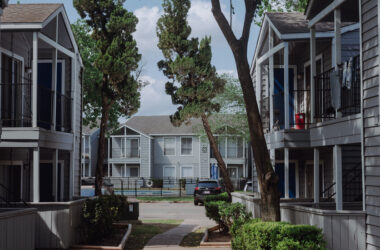WASHINGTON (AP) — Housing costs contributed to an increase in inflation in the United States in July, ending 12 consecutive months of decline. However, when excluding volatile food and energy prices, core inflation remained relatively low, with the smallest monthly increase in almost two years.
The government reported on Thursday that consumer prices had risen by 3.2% compared to the previous year. This was an increase from the 3% annual rise in June, which was the lowest rate in over two years. While July’s inflation rate remained below last year’s peak of 9.1%, it still exceeded the Federal Reserve’s target of 2%.
The Federal Reserve, economists, and investors closely monitor core inflation figures to assess future inflationary pressures. From June to July, core inflation remained at a modest 0.2%.
These price data will weigh heavily in the Federal Reserve’s decision on whether to continue raising interest rates in their efforts to control inflation. Since March 2022, the Fed has already raised its benchmark rate 11 times, reaching a 22-year high.
The recent increase in energy prices has sparked renewed concerns about inflationary pressures in the economy. Gasoline prices have jumped nearly 30 cents in the past month, with the national average reaching $3.83 per gallon, according to AAA.
Economists believe that the initial progress in tackling inflation has already been made. For example, gasoline prices have dropped significantly since reaching a peak national average of over $5 per gallon in June of last year following Russia’s invasion of Ukraine. While gasoline prices may fluctuate on a monthly basis, they have shown overall decline.
A large portion of the surge in inflation that began in 2021 was due to supply chain disruptions caused by the rapid economic recovery from the pandemic recession in 2020. This led to delays, shortages, and higher prices. However, supply chain backlogs have eased in the past year, reducing the upward pressure on goods prices. In fact, prices of long-lasting manufactured goods decreased in June.
Now, the Fed faces the challenge of persistent inflationary pressures in service businesses such as restaurants, hotels, and entertainment venues, where wages contribute significantly to costs. Due to worker shortages, many of these service companies have had to raise wages significantly.
Last week, the Labor Department reported that average hourly wages rose 4.4% in July compared to the previous year, surpassing expectations. To compensate for higher labor costs, companies have generally increased their prices, thus fueling inflation.
Another factor contributing to the slight increase in year-over-year inflation rates is the significant price increases that occurred in the first half of last year before slowing down in the second half. Therefore, any price increase in July would have a magnified effect on the year-over-year inflation rate.
However, economists warn against drawing conclusions based on a single month of data. Many expect inflation to continue trend downwards.
Used car prices, which had soared during the pandemic, have begun to decline. According to Edmunds.com, prices dropped 5.1% in July compared to the previous year, with the average price at $29,198. The peak of used car prices occurred in July of last year when there was a shortage of new vehicles due to a global computer-chip shortage. Consumers who couldn’t find new cars turned to the used market, driving up prices.
This year, as automakers have managed to acquire more chips and produce more new vehicles, used vehicle prices have started to decrease. Many consumers who were forced to buy used cars are now returning to the new-vehicle market. It is expected that used-vehicle prices will continue to decline, albeit modestly, throughout the year.
Despite concerns about higher labor costs, the Labor Department’s employment cost index, which measures wages and salaries, showed slower growth from April to June. Excluding government jobs, employee pay increased by 1%, lower than the 1.2% increase in the first three months of 2023. Compared to the previous year, wages and salaries grew by 4.6%, down from a 5.1% increase in the first quarter.
Rental prices, which had surged after the pandemic, are also starting to cool down. Researchers at the Federal Reserve Bank of San Francisco predict that year-over-year shelter inflation will continue to slow throughout late 2024 and may even turn negative by mid-2024.








